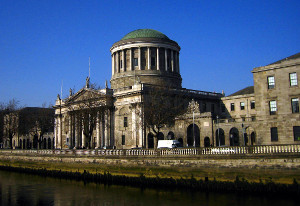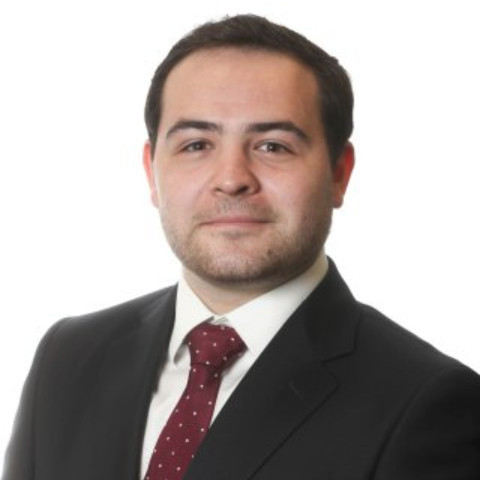Supreme Court: Medical certificate of injuries held inadmissible in criminal assault case

The Supreme Court has ruled that a medical certificate of injuries allegedly sustained by a victim of assault was inadmissible evidence because the certifying doctor had not examined the victim.

About this case:
- Citation:[2021] IESC 74
- Judgment:
- Court:Supreme Court
- Judge:Mr Justice Seamus Woulfe
It was held that section 25 of the Non-Fatal Offences Against the State Act 1997 required a doctor issuing a certificate to have personally examined the victim.
It had been argued by the DPP that the provision did not make any specific reference to a treating doctor and, further, that several medical staff would attend to an injured person in any given case. However, the court rejected this, stating that the certificate was intended to take the place of vive voce examination, so a doctor would need to have personal experience of the case.
Background
The defendant (known as AC) was tried in the Circuit Criminal Court in 2018 on one count of assault causing harm and one count of assault causing serious harm. It was alleged that the defendant had hit the victim in the head/face with a bar stool. The victim suffered a significant eye injury as a result.
At trial, the prosecution sought to adduce evidence of a certificate provided by a consultant ophthalmic surgeon pursuant to the provisions of the 1997 Act. Section 25 provided that such a certificate could be adduced as evidence regarding the victim’s injuries. Such provision obviated the need for a medical expert to attend court to prove a victim’s injuries.
However, the defendant objected to the medical certificate which related to the count of assault causing serious harm. It was argued that the medical expert had not personally examined the victim and that his certificate was based on clinical notes collected from other doctors on the dates in question.
It was said that a section 25 certificate required the certifying doctor to have personally examined the victim in order for the evidence to be admissible. The Circuit Court judge considered the legislation and refused to admit the certificate. It was said that the language of section 25 was clear and that only a doctor who had examined the victim could issue the certificate. As such, the court directed a verdict of not guilty on the second count.
The matter was referred to the Court of Appeal by way of case stated. The specific question asked was whether the trial judge was correct in his interpretation of section 25.
The Court of Appeal overturned the decision, stating that there was no stipulation in the legislation that the certificate had to be issued by a treating doctor. The court held that the section was unqualified and that this was unsurprising given that a large number of medical staff may be treating a patient and making notes.
The decision was appealed by the defendant to the Supreme Court.
Supreme Court
Delivering the main judgment in the case, Mr Justice Seamus Wolfe began by noting that the Court of Appeal adopted a literal interpretation of the legislation. However, it was said that the Court of Appeal failed to consider the inherent nature of certificates and their admissibility as evidence under section 25.
It was held that a certificate was an official documentary statement of truth or fact. Considering the present certificate, it was clear that the doctor had only examined the clinical notes of other treating doctors and had not attended to the victim himself. In those circumstances, the court queried how the doctor was in a position to state the victim’s injuries as a matter of fact.
The court held that section 25 was ambiguous and that there was “considerable doubt as to the scope of the intended application of the provision”, as shown by the divergence in judicial opinion. Applying section 5 of the Interpretation Act 2005, the court said that the plain intention of the Oireachtas was to “obviate the necessity for medical practitioners to attend Court and give oral evidence to prove their own medical records which, in most cases, will probably be of a routine and uncontroversial nature”.
As such, the court held that the trial judge was correct to exclude the certificate from evidence. Chief Justice Donal O’Donnell wrote a concurring judgment, stating that he had “considerable difficulty” with the notion that an unrelated practitioner could certify the injuries of a victim without examination.
Mr Justice O’Donnell stated that the purpose of the legislation was to allow a doctor to substitute vive voce evidence with the certificate evidence and nothing in the legislation suggested a further objective beyond this. The Chief Justice observed that if the doctor was required to attend in person, then he could not have given evidence on the basis of someone else’s notes.
Further, it was “inconceivable” that the Oireachtas would not have put limits on such a wide power of certification where any doctor could have technically certified any examination. Finally, the fact that the certificate was evidence, and not amenable to cross-examination, also necessitated a narrow interpretation of the provision.
While not a subject of the appeal, Mr Justice O’Donnell also considered the point of difference between Mr Justice Woulfe and Mr Justice Peter Charleton on whether a certificate could express an opinion as to the nature of the harm suffered by the injured party. This arose in a context where the certificate stated that the victim suffered “likely permanent long term damage”.
It was said that an examination may involve an element of both opinion and experience. However, the fact that a certificate could not be challenged as evidence meant that it should be limited to essential factual matters. The certificate had to contain enough detail for jury members to understand. Mr Justice O’Donnell agreed with Mr Justice Woulfe that a statement of the severity of harm was an opinion that was not capable of certification.
Conclusion
The court allowed the appeal and upheld the decision of the trial judge to exclude the certificate.







